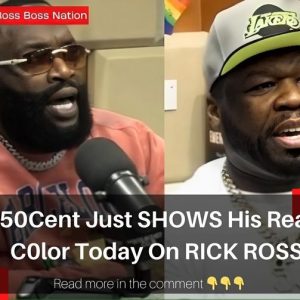On The Death of Slim Shady, the rapper trots out the familiar slurs. But complaining about woke Gen Zs isn’t the first time he’s launched a generational war.

Guess who’s back. Well, with those three words, you don’t need to. Eminem has a new album out, The Death of Slim Shady (Coup de Grâce). And though hip-hop’s chief motormouth is now very much middle-aged – a ripe 51, in fact – he’s not in the mood for retirement. The Death of Slim Shady has been doing very well since its release last Friday: it’s on track to go number one in the UK this weekend, and could well do the same in the US, where it would finally crack Taylor Swift’s months-long monopoly of the top album slot. The lead single “Houdini” also hit number one around the world and reached number two in the US, wading its way through summer pop bangers from Sabrina Carpenter et al.
Trending Video
Gus Kenworthy Responds To Fans On The Internet
Marshall Mathers has not mellowed with age. The new album is riddled with the same kind of inflammatory, venomous lines he’s cooked up for decades. It gets through an Urban Dictionary’s worth of slurs, new and old and of all levels of offence. Eminem devotes an entire song, “Brand New Dance”, to mockery of the paralysed former Superman actor Christopher Reeve – the joke, such as it is, is that Reeve can’t perform the dance moves he describes. He references getting “popped like Halyna Hutchins”, the cinematographer killed when Alec Baldwin discharged a loaded gun on a film set. And, like that other fifty-something controversialist, Dave Chappelle, Eminem can barely go a minute without vomiting a cheap gag about trans people, Caitlin Jenner in particular.
This has all inspired media dissections of the album’s most shocking bars. Some people are simply nonplussed that Eminem is still relying on the same outrage shtick as usual. In one viral TikTok, a user judges a “Houdini” lyric – “My transgender cat’s Siamese / Identifies as black, but acts Chinese” – as just showing the desperation for relevance of an old man out of ideas. “Honestly,” they say, “if you unironically listen to this grandpa, geezer-ass rap bro, you’re fucking cooked. This is embarrassing.”
But the discourse isn’t one-sided. It’s got bizarrely meta. The idea that puritan Gen Zs are trying to cancel Eminem, to the fury of millennial fans, has been pushed back on: on Reddit, there’s an entire thread on the subject of how “this whole ‘Gen Z is tryna cancel Eminem’ Bs is so dumb”. One TikToker released a skit in which he played listeners from various generations, with the Gen X and millennial insisting that the Zoomer wants to cancel Eminem, despite said Zoomer flat-out denying it. “I now see more criticism towards the criticism than criticism towards the song,” the character says.
This idea – that the argument has ballooned out of proportion to what it’s supposed to be about – fits like a glove to Eminem and his music. Because with Eminem, the arguments are never purely external to the music – they’re a foundational part of it. On The Death of Slim Shady, this takes the form of constant references to cancellation. On “Lucifer”, he raps: “With every line that I recite, them PC police try / To throw me in jail with no bail like a peace prize.” There are clanging references to giving your pronouns. On “Habits”, he straightforwardly asks: “You gonna cancel me, yeah? Gen-Z me, bruh?”
The same thing happens in his trio of classic albums, The Slim Shady LP, The Marshall Mathers LP and The Eminem Show, released from 1999 to 2002. Practically every lyric that isn’t a slur or rape fantasy is analysing the public reaction to those that are. Of all popular music’s major songwriters, no-one is quite so ceaselessly self-referential. “Without Me” is all about how boring music is without him; he talks about attempts to shut down his songs on MTV, and cheerfully admits he’s a white dude getting very wealthy off Black music.
Eminem also uses multiple personas in his songs: Marshall Mathers is the thoughtful man, Eminem is his rap alter ego, and Slim Shady is that alter ego’s even more deranged alter ego. And he gets those personas to argue with each other, to mimic the people arguing about him. In the video to “Houdini” – which reuses the “Guess who’s back” lyrics from “Without Me” with a different melody – modern-day Eminem battles a youthful Slim Shady with bleached blonde hair, superhero-style.
That he and others have framed the debate around The Death of Slim Shady as something of a generational war is ironic, because that’s how he framed his old music too. Only then, it wasn’t about prim youngsters and older fans, but the reverse: how his music was poisoning the minds of adolescent America, despite the best efforts of parents and politicians. On “Without Me”, he raps about “infesting in your kid’s ears and nesting”; on “White America”, about how “Little Eric” and “Erica” love his music. That generational culture war was realer than the phantom woke Zoomers he rails against today. But reality isn’t the point – the point is the ceaseless, tongue-twisting argument itself. Guess he really is back.





